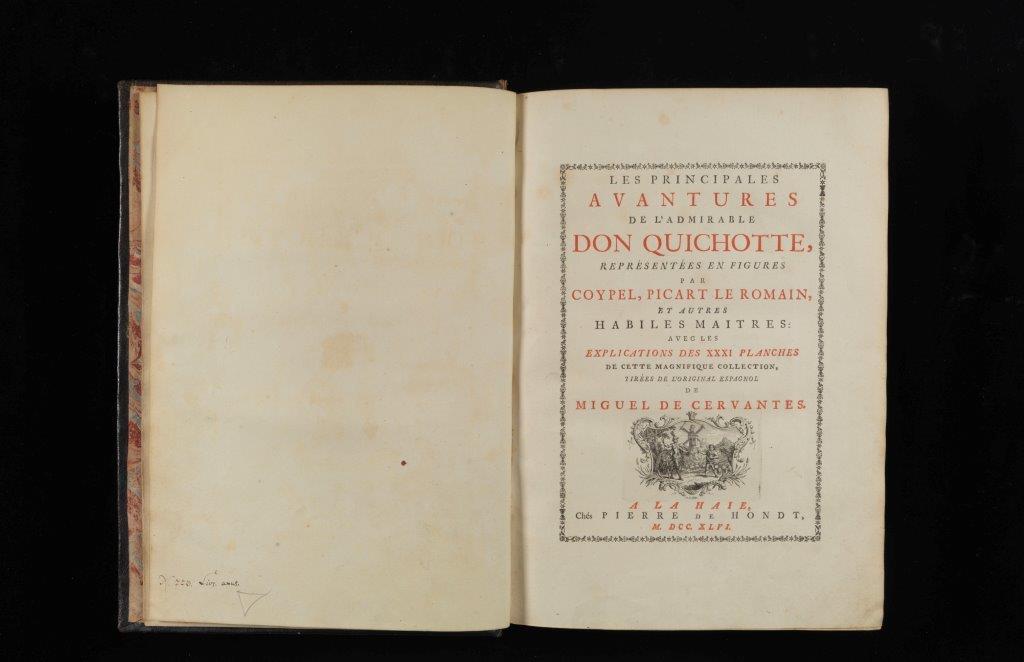
- The Hague: Pierre de Hondt, 1746
- Large in-4º; 332 pp.; 31 plates.; printed on paper; 18th century Dutch binding in dark green morocco with gold-tooled decoration
- Inv. LA21
- Ex-libris from the Poullier-Ketele Collection – PK – Tout passe le livre reste
‘Les Principales Avantures de l’Admirable Don Quichotte […]’
Although this is an abbreviated version of Cervantes’ text, ‘taken from the Spanish original’, the 31 etchings it contains represent a notable exercise in understanding the novel’s original text, thanks to the skill of Charles-Antoine Coypel, painter to the king of France (Louis XV). The year after entering the Academy (1715), Coypel began a project that would not only mark a milestone in his artistic career, but also lead to the creation of a set of drawings which were to set the mould for images of Don Quixote. The project in question was the execution of cartoons for a series of tapestries titled Suite de Don Quichotte (1716–51) to be produced by the Gobelins Royal Gobelins. Coypel subsequently had the compositions reproduced as engravings (1721).
The Pierre de Hondt edition, which includes compositions by Cochin and Boucher, among others, was produced in a courtly environment and its genre scene illustrations suggest the influence of Watteau. As the dedication to the Most Serene Prince of Poland, Duke of Saxony, François Xavier, explains, the work was designed for ‘the amusement of people of taste and even the most serious of people’, employing a refined and elegant style, in which the presence of allegories, at the beginning and end of the book, could suggest a moral and didactic reading, albeit uncompromised or bound by a pre-established iconographic scheme.
Acquired by Calouste Gulbenkian, through Henri Leclerc, at the sale of the Collection of Madame Poullier-Ketele, Galerie J. & A. Le Roy Frères, Brussels, 16 May 1924 (lot 323).
H. 35.5 cm; W. 27 cm
Binding: H. 36.5 cm; W. 27 cm